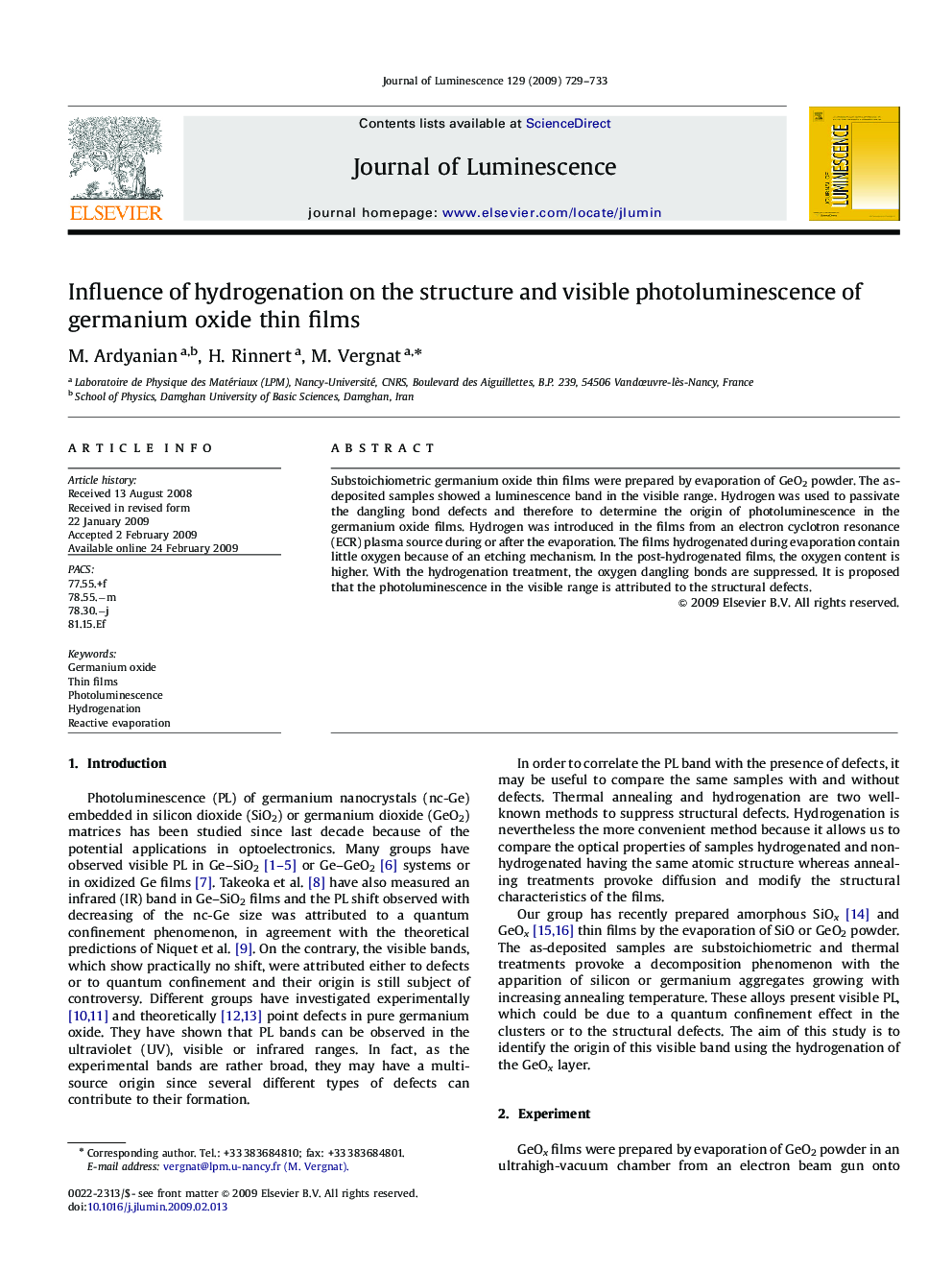| Article ID | Journal | Published Year | Pages | File Type |
|---|---|---|---|---|
| 5402607 | Journal of Luminescence | 2009 | 5 Pages |
Abstract
Substoichiometric germanium oxide thin films were prepared by evaporation of GeO2 powder. The as-deposited samples showed a luminescence band in the visible range. Hydrogen was used to passivate the dangling bond defects and therefore to determine the origin of photoluminescence in the germanium oxide films. Hydrogen was introduced in the films from an electron cyclotron resonance (ECR) plasma source during or after the evaporation. The films hydrogenated during evaporation contain little oxygen because of an etching mechanism. In the post-hydrogenated films, the oxygen content is higher. With the hydrogenation treatment, the oxygen dangling bonds are suppressed. It is proposed that the photoluminescence in the visible range is attributed to the structural defects.
Keywords
Related Topics
Physical Sciences and Engineering
Chemistry
Physical and Theoretical Chemistry
Authors
M. Ardyanian, H. Rinnert, M. Vergnat,
